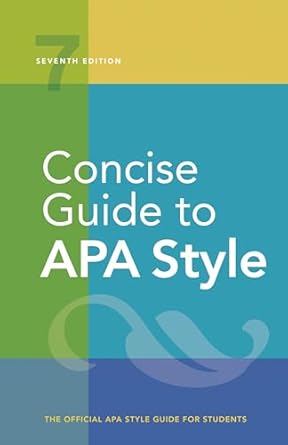[toc]
scholarly writing noun strings concise clarity
Concise Guide to APA Style: 7th Edition (OFFICIAL)
Page 59 Review
Effective Scholarly Writing: A Deep Dive into Noun Strings and Conciseness
In the realm of scholarly writing, clarity and conciseness are paramount.
As highlighted in this excerpt from “Effective Scholarly Writing,” mastering these elements can significantly enhance the readability and impact of your work.
Let’s dissect the key takeaways:
Decoding Noun Strings: A Reader’s Nightmare
The passage begins by addressing a common pitfall: noun strings.
As the author states, “Noun strings, meaning several nouns placed one after another to modify a final noun, can confuse readers and force them to question how the words relate to one another.” This phenomenon, where multiple nouns pile up to modify a single noun, can create ambiguity and hinder comprehension.
Imagine encountering phrases like “skinfold test body fat percentage examination” without any contextual clues.
The sheer density of nouns leaves the reader struggling to decipher the intended meaning.
The text astutely points out that while hyphenation can offer some relief, often a more effective solution lies in restructuring the sentence. “Although skillful hyphenation can clarify the relationships between words, often the best option is to untangle the string.
One approach to untangling is to move the final noun earlier in the string and show relationships between the other nouns by using verbs and prepositions.” This advice offers a practical pathway to navigate the complexities of noun strings.
By strategically repositioning nouns and incorporating verbs and prepositions, writers can create more fluent and accessible sentences.
The excerpt provides concrete examples to illustrate this point.
For instance, the cumbersome phrase “culturally sensitive qualitative interview techniques” can be transformed into the more reader-friendly “culturally sensitive techniques for qualitative interviews.” This simple rearrangement, incorporating the preposition “for,” clarifies the relationship between the nouns and enhances overall readability.
The passage further presents a table showcasing examples of problematic noun strings and their improved counterparts:
- Noun string: “skinfold test body fat percentage examination”
- Better sentence structure:
- “a caliper examination to determine body fat percentage”
- “examination ¢ askinfold test to determine body fat percentage”
- “determination of body fat percentage using calipers to measure skinfold thickness”
- Noun string: “preliminary online collegiate instructional methods survey results”
- Better sentence structure:
- “preliminary results of an online survey of collegiate instructional methods”
- “preliminary results of an online survey to assess college students’ preferred instructional methods”
The Power of Conciseness and Clarity
Moving beyond noun strings, the excerpt emphasizes the importance of conciseness and clarity in scholarly writing. “Say only what needs to be said in your writing: The writer who is more concise—that is, more frugal with words—writes a more readable paper.
Students increase their chances of academic success when they write concisely.
Likewise, writing that is precise and clear is more accurate and transparent.
Together, conciseness and clarity in your writing ensure that readers understand your meaning.” This statement underscores the direct correlation between succinct writing and academic achievement.
By eliminating unnecessary words and focusing on precision, writers can create more impactful and persuasive arguments.
The passage addresses a common concern among writers: the fear that conciseness will result in shorter papers.
However, it persuasively argues that adding extraneous material merely dilutes the focus and weakens the overall message. “Some writers may fear that writing concisely will make their papers too short.
However, adding extraneous material or “fluff” to make your paper longer will dilute its focus and meaning and will not improve your chances of getting a favorable grade.
If your paper is too short when written concisely, your ideas and themes may need to be further developed to add substance.” Instead of padding the paper with irrelevant information, writers should focus on developing their ideas more thoroughly to achieve the desired length.
The excerpt concludes by offering practical advice on how to achieve conciseness: “Where possible, tighten language to eliminate wordiness, redundancy (see Section 2.5), evasiveness, overuse of the passive voice, circumlocution, and clumsy prose.
Shorten or eliminate overly detailed descriptions of equipment or apparatuses, participants, or procedures; elaborations of the obvious; and irrelevant observations or asides.” This comprehensive list provides a valuable checklist for writers seeking to refine their prose and enhance its impact.
Buy full ebook for only $18: https://www.lulu.com/shop/american-psychological-association/concise-guide-to-apa-style-7th-edition-official/ebook/product-rmzpq54.html?page=1&pageSize=4
Scholarly Writing Noun Strings Concise Clarity
Read more: APA Style: Mastering Capitalization Rules

